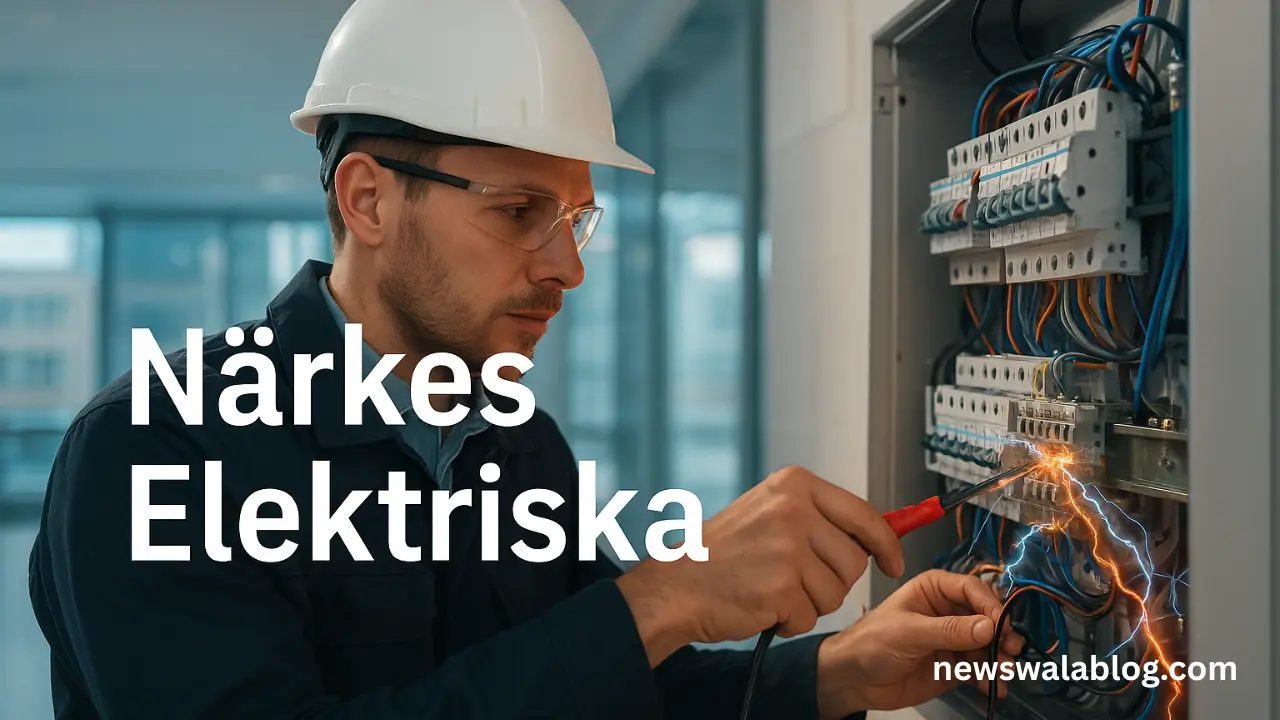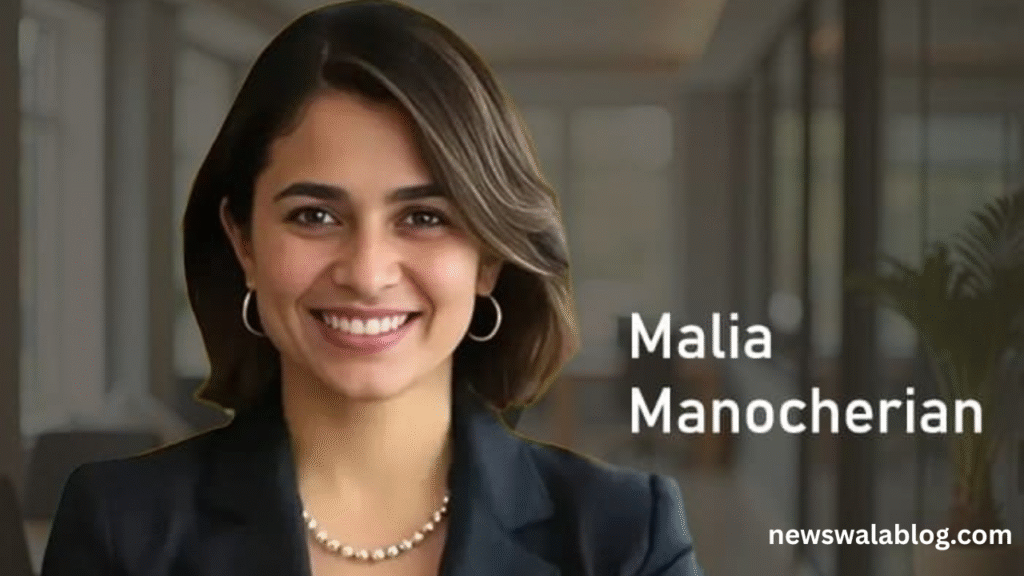Business
The Complete Guide to Protocolo Operacional Padrao Building Efficiency and Excellence
Published
3 months agoon
By
Owner
Introduction and Overview
In today’s fast-paced business environment, organizations constantly seek ways to improve efficiency, maintain consistency, and ensure quality across all operations. One of the most effective tools for achieving these goals is the implementation of a well-designed protocolo operacional padrao, or standard operating protocol.
Definition and Purpose of Standard Operating Protocols
A standard operating protocol serves as a comprehensive document that outlines the specific steps, procedures, and guidelines necessary to complete a particular task or process consistently. These protocols act as roadmaps, ensuring that every team member understands exactly what needs to be done, when it should be completed, and how to execute each step effectively.
The primary purpose of implementing a protocolo operacional padrao extends beyond simple documentation. These protocols create a foundation for organizational excellence by establishing clear expectations, reducing errors, and promoting uniformity across all departments and functions.
Importance in Organizational Efficiency and Consistency

Organizations that embrace standardized protocols experience significant improvements in operational efficiency. When employees follow established procedures, they spend less time figuring out how to complete tasks and more time focusing on execution and innovation. This streamlined approach eliminates guesswork and reduces the likelihood of mistakes that can cost time, money, and resources.
Consistency becomes a natural byproduct of well-implemented protocols. Whether a task is performed by a new employee or a seasoned professional, the outcome remains predictable and reliable. This consistency builds trust with customers, stakeholders, and team members alike.
Regulatory Compliance and Quality Assurance Benefits
Many industries face strict regulatory requirements that demand adherence to specific procedures and standards. A properly developed protocolo operacional padrao ensures that organizations meet these compliance requirements consistently, reducing the risk of penalties, legal issues, and reputation damage.
Quality assurance becomes more achievable when standardized protocols are in place. These documents serve as quality control mechanisms, helping organizations maintain high standards and identify areas for improvement before problems escalate.
Development and Design Principles

Creating an effective standard operating protocol requires careful planning, thoughtful design, and strategic implementation. The development process involves several key principles that ensure the final document serves its intended purpose effectively.
Identifying Processes That Require Standardization
Not every organizational process requires a formal protocolo operacional padrao. Organizations should focus on identifying critical processes that significantly impact quality, safety, compliance, or customer satisfaction. These typically include repetitive tasks, complex procedures with multiple steps, processes involving multiple departments, and activities with high error potential.
The identification process should involve input from various stakeholders who understand the nuances of different operations. This collaborative approach ensures that the most important processes receive proper attention and standardization.
Key Stakeholder Involvement and Input Gathering

Successful protocol development requires active participation from individuals who perform the actual work. Front-line employees often possess valuable insights about potential challenges, shortcuts, and improvements that may not be apparent to management or external consultants.
Stakeholder involvement should extend beyond initial input gathering. Regular feedback sessions and collaborative reviews help ensure that the protocolo operacional padrao remains relevant, practical, and effective over time.
Clear, Measurable Objectives and Outcomes
Every standard operating protocol should establish clear objectives that align with broader organizational goals. These objectives should be specific, measurable, achievable, relevant, and time-bound. When team members understand the desired outcomes, they can better execute the procedures and contribute to continuous improvement efforts.
Measurable outcomes provide a foundation for performance evaluation and protocol refinement. Organizations can track progress, identify trends, and make data-driven decisions about necessary updates or modifications.
Step-by-Step Procedure Documentation
The heart of any effective protocolo operacional padrao lies in its detailed, step-by-step documentation. Each step should be written in clear, concise language that eliminates ambiguity and reduces the potential for misinterpretation.
Visual aids, flowcharts, and diagrams can enhance understanding and make complex procedures more accessible to team members with different learning styles and experience levels.
Core Components of an SOP
A comprehensive standard operating protocol contains several essential components that work together to create a complete and effective document.
Purpose and Scope Definition
Every protocolo operacional padrao should begin with a clear statement of its purpose and scope. This section explains why the protocol exists, what it aims to accomplish, and which processes or activities it covers. A well-defined scope prevents confusion about when and how to apply the protocol.
The purpose statement should connect the protocol to broader organizational objectives, helping team members understand the importance of following established procedures.
Roles and Responsibilities Assignment
Clear role definition eliminates confusion about who should perform specific tasks within the protocol. This section should identify all stakeholders involved in the process, outline their specific responsibilities, and establish accountability measures.
Role assignments should consider individual skills, availability, and organizational hierarchy to ensure realistic and sustainable implementation.
Required Materials, Tools, and Resources
A comprehensive protocolo operacional padrao includes detailed information about all materials, tools, equipment, and resources necessary to complete the process successfully. This information helps team members prepare adequately and ensures consistent execution across different situations and locations.
Resource requirements should be regularly reviewed and updated to reflect changes in technology, availability, or organizational needs.
Detailed Procedural Steps and Workflows
The procedural section forms the core of the standard operating protocol. Each step should be numbered sequentially and written in active voice using clear, specific language. Complex procedures may benefit from visual flowcharts or decision trees that illustrate the workflow clearly.
Workflows should account for potential variations, exceptions, and decision points that may arise during execution. Alternative paths and contingency procedures help maintain consistency even when circumstances change.
Safety Considerations and Risk Management
Safety should be integrated throughout the protocolo operacional padrao rather than treated as an afterthought. This section identifies potential hazards, outlines preventive measures, and provides guidance for managing risks effectively.
Emergency procedures and escalation protocols should be clearly documented and easily accessible to all team members involved in the process.
Quality Control Checkpoints
Strategic quality control checkpoints help ensure that the protocol achieves its intended outcomes. These checkpoints should identify specific criteria for success, measurement methods, and corrective actions when standards are not met.
Regular quality assessments provide opportunities for continuous improvement and help maintain high performance standards over time.
Implementation Strategy
Successful protocol implementation requires careful planning and strategic execution. Organizations must consider various factors to ensure smooth adoption and sustained compliance.
Training and Education Requirements
Team members need adequate training before they can effectively follow a new protocolo operacional padrao. Training programs should cover not only the specific procedures but also the underlying principles and objectives that guide the protocol.
Different learning styles and experience levels may require varied training approaches, including hands-on demonstrations, written materials, and interactive sessions.
Communication and Rollout Planning
Effective communication ensures that all stakeholders understand the importance of the new protocol and their role in its implementation. Communication strategies should address potential concerns, highlight benefits, and provide clear timelines for adoption.
Rollout planning may involve phased implementation, pilot programs, or gradual expansion depending on the complexity and scope of the protocol.
Timeline and Milestone Establishment
Clear timelines and milestones help track implementation progress and maintain momentum throughout the adoption process. These benchmarks should be realistic and achievable while promoting steady progress toward full implementation.
Regular milestone reviews provide opportunities to address challenges, celebrate successes, and make necessary adjustments to the implementation plan.
Resource Allocation and Budget Considerations
Implementing a new protocolo operacional padrao often requires additional resources, including training time, materials, equipment, and potentially new personnel. Organizations should carefully assess these requirements and allocate appropriate resources to ensure successful implementation.
Budget considerations should account for both initial implementation costs and ongoing maintenance expenses associated with the protocol.
Monitoring and Compliance
Ongoing monitoring ensures that standard operating protocols continue to deliver their intended benefits and remain effective over time.
Performance Metrics and Key Indicators
Effective monitoring requires the establishment of relevant performance metrics that align with the protocol’s objectives. These indicators should be measurable, meaningful, and actionable, providing clear insights into protocol effectiveness.
Regular measurement and analysis help identify trends, potential issues, and opportunities for improvement within the protocolo operacional padrao framework.
Regular Auditing and Assessment Procedures
Systematic auditing ensures consistent compliance with established protocols while identifying areas where additional support or refinement may be necessary. Audit procedures should be fair, thorough, and focused on improvement rather than punishment.
Assessment results should be documented and shared with relevant stakeholders to promote transparency and continuous learning.
Documentation and Record-Keeping Requirements
Proper documentation provides evidence of compliance and creates a historical record that can inform future improvements. Record-keeping requirements should be clearly defined and integrated into the protocol itself.
Documentation systems should be accessible, organized, and secure to ensure information integrity and availability when needed.
Non-Compliance Identification and Correction
When deviations from the
occur, organizations need clear procedures for identifying, investigating, and correcting these issues. The focus should be on understanding root causes and implementing preventive measures rather than simply addressing symptoms.
Correction procedures should be fair, consistent, and designed to promote learning and improvement rather than create fear or resistance.
Review and Continuous Improvement
Standard operating protocols are living documents that must evolve with changing organizational needs, technological advances, and industry developments.
Scheduled Review Cycles and Update Procedures
Regular review cycles ensure that protocols remain current, relevant, and effective. These reviews should be scheduled at appropriate intervals based on the protocol’s complexity, criticality, and rate of change in the underlying processes.
Update procedures should be systematic and include appropriate approval processes to maintain document integrity and version control.
Feedback Collection from Users and Stakeholders
User feedback provides valuable insights into protocol effectiveness and identifies opportunities for improvement. Feedback collection should be ongoing rather than limited to formal review periods.
Multiple feedback channels, including surveys, interviews, and suggestion systems, can capture diverse perspectives and ensure comprehensive input.
Process Optimization and Efficiency Improvements
Continuous improvement efforts should focus on optimizing processes while maintaining quality and compliance standards. The protocolo operacional padrao should evolve to incorporate new technologies, methodologies, and best practices that enhance efficiency.
Improvement initiatives should be data-driven and consider the impact on all stakeholders involved in the process.
Version Control and Change Management
Effective version control ensures that all team members work with the most current protocol version while maintaining a clear history of changes and improvements. Change management procedures should balance the need for updates with the importance of stability and consistency.
Clear communication about changes and their rationale helps maintain user confidence and promotes smooth transitions to updated protocols.
Industry Applications
Standard operating protocols find application across diverse industries, each with unique requirements and challenges.
Healthcare and Medical Procedures
In healthcare settings, standardized protocols are essential for patient safety, treatment consistency, and regulatory compliance. Medical procedures require precise execution, and a well-designed protocolo operacional padrao can mean the difference between successful treatment and serious complications.
Healthcare protocols must account for patient variability, emergency situations, and complex interdisciplinary coordination while maintaining the highest safety standards.
Manufacturing and Production Processes
Manufacturing environments rely heavily on standardized protocols to ensure product quality, worker safety, and operational efficiency. These protocols help maintain consistency across shifts, locations, and personnel while supporting continuous improvement initiatives.
Production protocols must balance flexibility with standardization to accommodate varying product specifications and market demands.
Information Technology and Data Management
IT organizations use standard operating protocols to ensure system reliability, data security, and service consistency. These protocols are particularly important for incident response, system maintenance, and change management activities.
Technology protocols must evolve rapidly to keep pace with advancing technologies and emerging security threats.
Emergency Response and Safety Protocols
Emergency situations require immediate, coordinated responses that leave no room for confusion or delay. Well-designed emergency protocols provide clear guidance for various scenarios while ensuring the safety of all involved parties.
Emergency protocols must be regularly tested and updated based on lessons learned from drills and actual incidents.
Financial Services and Regulatory Compliance
Financial institutions operate in heavily regulated environments where compliance failures can result in significant penalties and reputation damage. Standardized protocols help ensure consistent adherence to regulatory requirements while supporting efficient operations.
Financial protocols must address complex regulatory frameworks while maintaining flexibility to adapt to changing requirements and market conditions.
Conclusion
The implementation of effective standard operating protocols represents a strategic investment in organizational excellence. When properly developed, implemented, and maintained, a protocolo operacional padrao becomes a powerful tool for achieving consistency, efficiency, and quality across all organizational activities.
Success with standard operating protocols requires commitment from leadership, engagement from team members, and ongoing dedication to continuous improvement. Organizations that embrace this systematic approach to process management position themselves for sustainable success in an increasingly competitive business environment.
The journey toward protocol excellence begins with a single step: identifying the most critical processes that would benefit from standardization. From there, organizations can build a comprehensive framework of protocols that support their mission, vision, and strategic objectives while delivering tangible benefits to customers, employees, and stakeholders alike.
Also Read: Poundland Store Closures What Customers Need to Know About the UK Retail Giant’s Future
You may like
Business
Understanding the Kennedy Funding Lawsuit: What It Means and Why It Matters
Published
1 month agoon
October 15, 2025By
Owner
The Kennedy Funding lawsuit has drawn significant attention due to its impact on both investors and borrowers within the real estate and finance sectors. This case revolves around a series of legal disputes involving Kennedy Funding, a well-known private lender that specializes in bridge loans and commercial property financing. The controversy has raised important questions about transparency, loan practices, and borrower rights. In this article, we will explore the background of the Kennedy Funding lawsuit, its core issues, key developments, and what lessons can be learned from it for future business dealings.
Background of Kennedy Funding
Kennedy Funding is a New Jersey-based private lending company that provides short-term bridge loans to businesses and property developers. The company has been in operation for decades, positioning itself as a solution for borrowers who struggle to obtain traditional financing. It has been involved in funding projects across the United States and internationally. However, over the years, complaints have surfaced from clients alleging unfair lending terms and misleading agreements, leading to what has now become known as the Kennedy Funding lawsuit.
The Origin of the Kennedy Funding Lawsui

The Kennedy Funding lawsuit began when several borrowers claimed that the company did not fulfill the loan agreements as initially promised. Many of these borrowers alleged that the lender charged high upfront fees but failed to deliver the promised funds in a timely manner. Others stated that the loan conditions changed suddenly during the process, resulting in financial losses and stalled real estate projects.
As these complaints gained attention, multiple lawsuits were filed against the company. The allegations mainly focused on breach of contract, deceptive loan practices, and lack of transparency. This series of legal actions has sparked industry-wide discussions on how private lenders operate and how borrowers can better protect themselves.
Major Allegations in the Case
The Kennedy Funding lawsuit revolves around several major claims:
- Breach of Contract: Borrowers alleged that Kennedy Funding failed to honor specific terms outlined in their agreements, leading to financial hardship.
- Misrepresentation: Plaintiffs accused the company of providing misleading information about loan timelines and approval requirements.
- Excessive Fees: Another frequent complaint involved high non-refundable fees charged before any loan disbursement, leaving borrowers at a loss if funding did not proceed.
- Unfair Loan Practices: Some lawsuits suggested that Kennedy Funding leveraged contract clauses to its advantage, making it difficult for borrowers to exit agreements once signed.
These allegations have positioned the Kennedy Funding lawsuit as a landmark example in discussions about the ethical standards of private lending firms.
The Company’s Response

Kennedy Funding has consistently denied the allegations made against it, maintaining that it operates within all legal and regulatory standards. The company has argued that borrowers often misunderstand the risks and conditions associated with private lending. According to their official statements, Kennedy Funding only approves loans that meet specific criteria and ensures that clients are informed about the process.
In response to the Kennedy Funding lawsuit, the firm’s legal representatives have emphasized that all clients enter agreements voluntarily and that every transaction is backed by proper documentation. Despite these claims, the company continues to face ongoing legal scrutiny and public debate.
The Legal Proceedings and Current Status
The Kennedy Funding lawsuit has evolved over several years, with multiple cases being filed and settled at different times. Some lawsuits have been dismissed due to insufficient evidence, while others have led to financial settlements. Legal experts suggest that the ongoing disputes have pushed for greater transparency within the private lending industry.
Court records and public reports reveal that most of the lawsuits focus on similar patterns—borrowers paying upfront fees but not receiving the expected loan funding. The outcomes vary depending on the evidence provided and the jurisdiction of the case. However, these proceedings have highlighted the need for both lenders and borrowers to maintain clear, written documentation and to communicate transparently throughout the loan process.
Impact on the Private Lending Industry

The Kennedy Funding lawsuit has had a ripple effect across the financial industry. Many private lenders are now under increased pressure to review their business models and improve their transparency with clients. Industry regulators are also considering stronger oversight to ensure fairness in private loan transactions.
Borrowers, on the other hand, have become more cautious. The lawsuit serves as a reminder to thoroughly research a lender’s history, read contracts carefully, and seek legal advice before signing any agreements. Transparency, due diligence, and professional guidance are now seen as essential steps in the lending process.
Lessons Learned for Borrowers and Businesses
There are several key lessons from the Kennedy Funding lawsuit that apply to any business or individual seeking private financing:
- Always Verify the Lender’s Track Record: Before entering an agreement, research past reviews, lawsuits, and customer feedback.
- Understand Every Clause: Many disputes arise from unclear contract terms. Have a legal expert review the agreement.
- Be Cautious of Upfront Fees: Non-refundable fees can pose a major risk if the loan is not approved or disbursed.
- Document Everything: Keep written records of communications, agreements, and promises made during negotiations.
These practices can help prevent misunderstandings and protect borrowers from falling into similar disputes.
Public Perception and Media Attention
Media coverage of the Kennedy Funding lawsuit has been mixed. Some reports focus on borrower complaints and alleged unethical practices, while others highlight the company’s defense and commitment to legitimate lending. The widespread attention has also spurred discussions about regulating private financing and ensuring fairness in loan agreements.
Public opinion remains divided—some see Kennedy Funding as a necessary alternative lender for difficult financial situations, while others view the lawsuit as evidence of deeper issues within the private lending market.
The Future of Kennedy Funding
Despite the controversies surrounding the Kennedy Funding lawsuit, the company continues to operate and provide lending services. It has made efforts to rebuild its image and assure clients of its reliability. Moving forward, the firm’s future will depend on how well it can demonstrate compliance, fairness, and transparency in its lending operations.
The broader financial industry is also evolving, with increasing calls for regulation of private lenders. This could lead to new laws that protect borrowers and promote ethical business practices in the lending sector.
Conclusion
The Kennedy Funding lawsuit is a significant case that highlights the importance of trust, clarity, and ethics in private lending. While the company maintains that it has operated within the law, the numerous allegations have drawn attention to the risks borrowers face in non-traditional financing. This ongoing situation serves as a reminder for businesses and individuals to approach private lending with careful research and professional guidance.
As the legal process continues, the outcome of the Kennedy Funding lawsuit will likely shape future lending standards and influence how both lenders and borrowers conduct business.
FAQs
1. What is the Kennedy Funding lawsuit about?
The Kennedy Funding lawsuit involves disputes between the private lender Kennedy Funding and its borrowers over alleged contract breaches and unfair lending practices.
2. Why did borrowers sue Kennedy Funding?
Borrowers claimed that the company failed to deliver promised loans and charged high upfront fees without following through on agreements.
3. How did Kennedy Funding respond to the allegations?
Kennedy Funding denied all allegations, stating that all agreements were legally valid and that borrowers were fully informed of the terms.
4. What impact has the lawsuit had on the lending industry?
The case has increased awareness about transparency and ethics in private lending, pushing companies to adopt clearer communication and documentation practices.
5. What can borrowers learn from the Kennedy Funding lawsuit?
Borrowers should research lenders carefully, understand contract terms, and seek legal advice before signing any private loan agreements.
read more : Žižole The Complete Guide to the Jujube Fruit: Uses, Benefits, and How to Grow It
Business
Why Choose Närkes Elektriska? A Complete and Informative Guide
Published
2 months agoon
October 7, 2025By
Owner
Närkes Elektriska has been a trusted name in electrical installation and technical services in Örebro and the surrounding regions for many decades. This article provides a clear and detailed overview of the company’s background, the range of services it offers, and why so many clients rely on Närkes Elektriska for quality work and dependable service. Whether you are a homeowner, business owner, or industrial client, this guide will help you understand what makes the company a reliable partner in electrical solutions.
History and Background
Närkes Elektriska traces its origins back to the early 1900s in Örebro. Originally part of a larger industrial enterprise, the company became independent after World War II. Over the years, it has grown from a local workshop into a modern provider of electrical installations, maintenance, and complete technical solutions. This long history has made Närkes Elektriska well-known in the region, with a strong reputation for professionalism, safety, and innovation.
Services and Specializations

Närkes Elektriska offers a wide range of services designed to meet modern demands for safety, efficiency, and sustainability. Their core services include electrical installations for homes and businesses, industrial maintenance, machinery and motor servicing, and the installation of lifts and hoists. They also specialize in energy optimization, charging stations for electric vehicles, and solar power systems. By combining traditional craftsmanship with modern technology, Närkes Elektriska delivers solutions that ensure long-term performance and reliability.
Energy Efficiency and Modern Energy Solutions
In today’s world, energy efficiency and sustainability are more important than ever. Närkes Elektriska helps clients reduce energy costs and environmental impact by offering tailored advice and installation of solar panels, smart systems, and energy-saving upgrades. Many property owners now turn to companies like Närkes Elektriska to calculate potential savings, optimize power usage, and take advantage of government incentives for green energy investments. These services not only lower costs but also increase property value over time.
Emergency and On-Call Services

Electrical faults can happen unexpectedly, and when they do, quick and safe handling is essential. Närkes Elektriska and other local firms often provide emergency services to minimize downtime and safety risks. If you need urgent assistance, it’s wise to keep their contact information easily accessible and describe your issue clearly when calling. Choosing an experienced, authorized electrician ensures fast troubleshooting and safe repairs — vital for both residential and industrial clients.
Safety, Certification, and Quality Assurance
Electrical work requires strict adherence to safety standards. Närkes Elektriska operates with the necessary authorizations, liability insurance, and professional certifications to ensure every project meets Swedish safety regulations. Clients are encouraged to ask for documentation, references, and detailed project reports. For larger installations such as industrial systems or elevator setups, these credentials are especially important to verify the quality and reliability of the work.
Industry Developments and Customer Projects

The electrical industry in Sweden has evolved rapidly, with new technologies and sustainable practices reshaping the market. Närkes Elektriska has adapted to these changes by investing in training, advanced tools, and energy-efficient technologies. Their long-standing relationships with local industries and municipalities reflect their ability to deliver consistent quality. Many clients highlight the company’s focus on long-term service agreements and preventive maintenance — two factors that help reduce future costs and ensure continuous operation.
How to Request a Quote
When requesting a quote from Närkes Elektriska or a similar company, be as specific as possible. Include details such as the type of building, total area, and any available blueprints or photos. Specify your preferred timeline and whether the work must be done without interrupting normal operations. Always ask for a clear breakdown of labor, materials, and guarantees — this helps you compare offers from different providers fairly. Checking references and viewing previous projects can also help you assess the quality of work before committing.
Common Projects and Cost Expectations
Typical projects handled by Närkes Elektriska include full electrical installations for new buildings, upgrades of old switchboards, EV charging station installations, solar energy systems, and long-term maintenance contracts. Prices vary depending on project complexity, materials, and any custom requirements. For renewable energy projects, clients often receive financial calculations showing expected payback time and long-term savings. This transparent approach makes it easier to plan investments wisely.
Conclusion
In summary, Närkes Elektriska stands out as a trusted electrical service provider with a combination of local experience, professional expertise, and modern technical solutions. Whether you need a full-scale installation, routine maintenance, or advice on sustainable energy options, Närkes Elektriska delivers dependable results with a focus on safety, quality, and efficiency. Choosing a certified and well-established company like this ensures your electrical systems remain safe, efficient, and ready for the future.
Frequently Asked Questions (FAQ)
1. What does Närkes Elektriska do?
Närkes Elektriska provides professional electrical installations, maintenance, and energy solutions for homes, businesses, and industries in the Örebro region.
2. Does Närkes Elektriska install solar panels and charging stations?
Yes, the company offers full installation and consultation for solar power systems and electric vehicle charging stations.
3. How can I get a quote from Närkes Elektriska?
Describe your project in detail, include images or drawings if possible, and request a transparent quote that outlines materials, labor, and warranty terms.
4. Why is certification important for electricians?
Certification ensures that the company follows national safety regulations and that the technicians are qualified to perform electrical work safely and correctly.
5. What types of clients does Närkes Elektriska work with?
They serve both private homeowners and commercial or industrial clients, offering customized solutions for each project’s unique needs..
read more: Prizmatem: A Practical Guide for Creators and Strategists.
Business
Who is malia manocherian? Vision, Work & Impact
Published
2 months agoon
October 6, 2025By
Owner
malia manocherian is a name gaining recognition in the fields of real estate, sustainability, creative publishing, and community development. She represents a new generation of entrepreneurs who blend tradition with innovation. With an approach that combines business acumen and social awareness, malia manocherian has become an inspiring figure for those who value purpose-driven growth and sustainable development.
Early Life and Family Background
malia manocherian comes from a family known for its strong legacy in real estate and community investment. Growing up surrounded by discussions about property, design, and development inspired her to think beyond traditional business goals. From an early age, she developed a curiosity about how spaces influence people’s well-being and how modern architecture could promote healthier, more sustainable lifestyles. Her family background provided a solid foundation, but her vision and creativity have allowed her to carve her own professional path.
Career Path: Publishing, Projects, and Entrepreneurship

Throughout her career, malia manocherian has explored multiple fields, including real estate, publishing, and creative ventures. She has been involved in projects that merge business innovation with artistic storytelling. Her publishing efforts focus on promoting inspiring narratives that encourage creativity and awareness about social responsibility.
In addition to her work in publishing, she continues to be active in development projects that emphasize design with purpose. Her entrepreneurial journey reflects a blend of creativity and strategy, showing how art, communication, and business can come together to create meaningful impact.
Focus on Sustainable and Human-Centered Development
A key part of malia manocherian’s work is her dedication to sustainability. She advocates for real estate and community projects that put people and the planet first. Her vision of development goes beyond profit — it’s about creating environments that enhance quality of life, foster connection, and reduce environmental impact.
Her approach includes integrating green technologies, designing wellness-focused spaces, and promoting long-term community value. These values make her stand out in an industry that often prioritizes short-term gains over lasting benefits.
Public Presence and Personal Interests

malia manocherian maintains a growing public presence through professional events, digital platforms, and interviews. Her communication style is relatable and authentic, connecting with people who share her interests in art, wellness, and social good. She often discusses creative thinking, sustainability, and empowerment — themes that resonate deeply with modern audiences.
Beyond business, she is passionate about photography, music, and travel. These pursuits give her a well-rounded perspective, allowing her to see inspiration and beauty in everyday life — qualities that reflect in her professional work as well.
What Makes Her Approach Unique
What distinguishes malia manocherian from others in her field is her ability to blend family legacy with forward-thinking innovation. Instead of simply continuing a successful business lineage, she brings fresh ideas centered on environmental responsibility and human connection. Her projects aim to create long-term value while staying grounded in ethics, creativity, and transparency.
This combination of experience and empathy has made her a respected voice among peers who appreciate integrity and vision in leadership.
Looking Ahead: The Future of Her Work

The coming years look promising for malia manocherian as she continues expanding her influence in both business and creative industries. Her future projects are expected to reflect her ongoing commitment to innovation and sustainability. She is part of a global wave of young entrepreneurs who believe that business can be both profitable and purposeful.
As awareness around sustainable living and responsible entrepreneurship grows, her work serves as a meaningful example for others striving to make a difference.
How to Learn More
Those interested in following malia manocherian’s journey can look for her upcoming projects, interviews, and professional updates through credible publications and platforms. As her career continues to evolve, more people are taking note of her efforts to merge creativity, sustainability, and leadership.
Her story reminds us that real success lies not just in financial achievement but in the positive impact we leave on communities and the environment.
Frequently Asked Questions
1. Who is malia manocherian?
malia manocherian is an entrepreneur and creative professional known for her work in sustainable development, real estate, and publishing.
2. What industries does she work in?
She works in real estate, sustainability, publishing, and creative arts, combining these areas to build human-centered projects.
3. What makes her unique?
Her focus on long-term community growth, environmental care, and innovative design distinguishes her from others in her field.
4. What are her future goals?
She aims to expand her sustainable development projects while continuing to promote creativity and social responsibility.
5. How can people learn more about her work?
People can stay updated through credible news features, interviews, and professional insights shared on public platforms.
Conclusion
malia manocherian represents a modern vision of entrepreneurship that values integrity, creativity, and sustainability. Her journey from a strong family background in real estate to a self-driven career in development and publishing showcases dedication to purpose and progress. Through her projects and public voice, she encourages a more thoughtful and balanced approach to success — one where innovation, community, and the environment all thrive together.
read more : Inside the Truth Behind the Doge HHS Migrant Housing Contract
Trending
-

 Celebrity3 months ago
Celebrity3 months agoPeter Kay Weight Loss The Incredible Transformation of Britain’s Beloved Comedian
-

 News3 months ago
News3 months agoWetherspoon Bar Drinking Ban New Policy Sparks Customer Controversy
-

 Entertainment3 months ago
Entertainment3 months agoErazno y La Chokolata The Ultimate Hispanic Comedy Radio Experience
-

 Food & Drink3 months ago
Food & Drink3 months agoDiscover the Authentic Taste of Бишкоти ди Прато Italy’s Most Beloved Almond Biscuits
-

 News3 months ago
News3 months agoManchester City 115 Charges Verdict Everything You Need to Know About the Historic Case
-

 Entertainment3 months ago
Entertainment3 months agoThe Complete Guide to Crusader Crossword Puzzles
-

 Blog3 months ago
Blog3 months agoRonnie Ramsay The Untold Story of Gordon Ramsay’s Brother
-

 Business3 months ago
Business3 months agoPoundland Store Closures What Customers Need to Know About the UK Retail Giant’s Future

